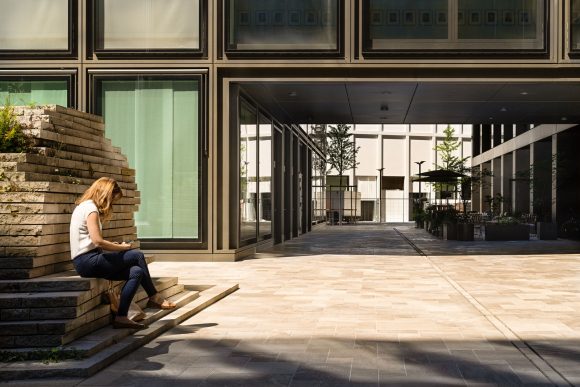Executive summary
“When one has finished building one’s house, one suddenly realizes that in the process one has learned something that one really needed to know in the worst way—before one began.” Friedrich Nietzsche
The Paris Agreement implicitly signed up the global building sector for full decarbonization by 2050. This translates to a seemingly reasonable annual reduction of 3.6%, but the sector’s emissions instead rose by 3% in recent years. Bending this curve could require investment in solutions of around USD 1tn per annum between now and 2050—at face value a large sum, but one that would yield significant benefits, and which equates to only 9% of total annual investment in the sector today.
The sector has the concepts and technologies to make substantial progress on decarbonization now. However, entrenched market barriers create hurdles: inadequate rewards for better buildings, insufficient penalties for worse buildings, and information transmission failure.
Private and public stakeholders can take complementary actions today to overcome these hurdles and accelerate decarbonization. For instance, private finance could provide some three quarters of total investment required, due to the investibility of decarbonization solutions, the sheer level of capital required, and the complicated nature of the sector. Current market barriers create an irreplaceable role for public authorities, who have both the incentives (working in the public interest) and the tools (taxes, subsidies, and regulations) to shape the rules and tilt markets toward society’s goals.
This report provides seven actions for public and private stakeholders to bend the curve on buildings’ emissions. The take-home messages are:
- Incentives are needed: Current building markets provide low incentives to act. Across different metrics, trends are going the wrong way; retrofit rates remain a third of what they need to be, and markets continue constructing new buildings that will be standing in 2050, when climate targets come due, but today aren’t zero-carbon ready (i.e., fully electrified). Public incentives are needed: “carrots” in the form of grants to reduce upfront capex, “sticks” that ensure that capex is spent. Any carrots must be targeted to avoid wasteful uses of public money. Private institutions can highlight roadblocks and create common metrics, guiding scarce public incentives to where they have the most “bang for buck”.
- New approaches to sharing risks are key: The high upfront costs and long payback times associated with buildings means the sector is naturally slow-moving, in direct contrast to the demands of its climate targets. New partnerships across public and private institutions can help share the risks that prevent the innovation, commercialization, and deployment of solutions today.
Related publications
Rethink, rebuild, reimagine—Laying the foundation for better buildings
Rethink, rebuild, reimagine—Laying the foundation for better buildings
Responsible for 37% of global emissions, decarbonizing the building sector is crucial to achieve Net Zero targets. Find out how we get there and the role of various stakeholders.
Retrofit revolution—Why the world needs one and how we can achieve it
Retrofit revolution—Why the world needs one and how we can achieve it
We make the case for a retrofit revolution, not just to bring the building stock into line with the Paris climate goals, but also to address social challenges like fuel poverty and the health issues caused by drafty or poorly ventilated buildings. We then outline the key factors holding retrofitting back, and describe seven essential steps which can help to unlock it.
Building society—Optimizing the social impacts of buildings
Building society—Optimizing the social impacts of buildings
We look at how to improve the social impacts of the buildings sector. This includes the need to improve the sustainability and welfare characteristics of construction supply chains, how to marry retrofitting with regeneration, and how to ensure all communities, not just those in wealthier areas, benefit from the retrofit revolution.










